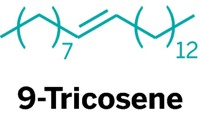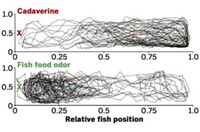Advertisement
Grab your lab coat. Let's get started
Welcome!
Welcome!
Create an account below to get 6 C&EN articles per month, receive newsletters and more - all free.
It seems this is your first time logging in online. Please enter the following information to continue.
As an ACS member you automatically get access to this site. All we need is few more details to create your reading experience.
Not you? Sign in with a different account.
Not you? Sign in with a different account.
ERROR 1
ERROR 1
ERROR 2
ERROR 2
ERROR 2
ERROR 2
ERROR 2
Password and Confirm password must match.
If you have an ACS member number, please enter it here so we can link this account to your membership. (optional)
ERROR 2
ACS values your privacy. By submitting your information, you are gaining access to C&EN and subscribing to our weekly newsletter. We use the information you provide to make your reading experience better, and we will never sell your data to third party members.
Environment
Science Concentrates
November 7, 2005
| A version of this story appeared in
Volume 83, Issue 45
Chemosensor turns on for mercury
A new water-soluble fluorescent chemosensor (shown) can be used for selectively screening mercury levels in fish (J. Am. Chem. Soc. 2005, 127, 16030). Christopher J. Chang, an assistant professor of chemistry at the University of California, Berkeley, and coworkers wanted a sensor that was selective for mercury and could be used at physiological conditions. It's extremely challenging to get something that has a combination of selectivity, water solubility, and a turn-on response, Chang says. His group found a sensor that meets those requirements by combining a fluorescein reporter group with an azathiacrown ether receptor that binds the mercury. In the absence of mercury, the sensor is practically nonfluorescent because the receptor quenches the fluorophore. After mercury is bound, the fluorescence emission increases more than 170-fold. The current sensor has a detection limit of 60 nM, which is sufficient for testing edible fish according to EPA guidelines, but Chang would like to improve the sensitivity in future designs.
Enzyme's dance may be a key to mechanism
Enzymes are typically thought of as static structures that accelerate reactions by stabilizing transition states. But in findings with implications for catalyst modification and design, researchers now show that the dynamic motions of enzymes during catalysis may be an essential part of their mechanisms and that similar motions may occur even when they are not catalyzing reactions (Nature 2005, 438, 117). Associate professor of biochemistry Dorothee Kern of Brandeis University and coworkers used NMR spectroscopy to study internal motions of the enzyme cyclophilin A. They found that the enzyme shifts between certain conformations during catalysis with a frequency that corresponds to the rate at which product is generated. This finding suggests that the motions are an essential part of cyclophilin A's catalytic action. They also found that the enzyme makes similar motions in its substrate-free state. We propose that the preexistence of collective dynamics in enzymes before catalysis is a common feature of biocatalysts and that proteins have evolved under synergistic pressure between structure and dynamics, the researchers write.
Nanotubes made nontoxic
By decorating single-walled carbon nanotubes (SWNTs) with certain covalently bound functional groups, chemists at Rice University have been able to render the tubes nontoxic in vitro (Toxicol. Lett., published online Oct. 17, dx.doi.org/10.1016/j.toxlet.2005.08.011). Christie M. Sayes and coworkers covalently modified SWNTs with phenyl-3,5-dicarboxylic acid, phenyl-4-sulfonic acid, or phenyl-4-sulfonate functional groups. They found that the SWNTs' cytotoxicity in human dermal fibroblasts decreased as the number of functional groups on each nanotube increased. By comparison, they noted that simply wrapping pristine SWNTs in solubilizing surfactant did little to attenuate the tubes' toxicity. According to the Rice team, the finding indicates that functionalized, water-dispersible SWNTs may be safer than their nonfunctionalized cousins. That could be good news for scientists hoping to use these structures for biomedical applications. Kevin D. Ausman, one of the study's coauthors, notes that the study, along with earlier research, suggests a general way to make other carbon nanoparticles less toxic.
Bat compound contains chlorine
Bats known as flying foxes release a slew of chemicals-including a chlorinated compound-from shoulder glands during mating season, according to Humboldt State University's William F. Wood and colleagues (Z. Naturforsch., C: J. Biosci. 2005, 60c, 779). The researchers collected the odorous fluids from the shoulder glands of four species of the bats at the Lubee Bat Conservancy in Florida and identified the constituents by gas chromatography-mass spectrometry. The researchers observed striking contrasts in the chemical profiles of the four species. Altogether, they identified 65 compounds, including hydrocarbons, carboxylic acids, alcohols, aldehydes, ketones, esters, and amides. Several, such as -methyl-4-methoxybenzyl alcohol and 1-chloro-3-methyl-2-butene (shown), haven't previously been observed in nature. Coauthor Paul J. Weldon of the Wildlife Conservation Society notes that chlorinated compounds are hardly ever seen on vertebrate skin. I know only of one compound from a frog-epibatidine, a powerful analgesic-and some volatiles recently identified from human skin that are chlorinated.
α-Synuclein's normal role
The protein α-synucleinforms clumps known as Lewy bodies in the brain cells of Parkinson's patients. But what is the normal function of this protein? Thomas C. Sdhof of the University of Texas Southwestern Medical Center and colleagues believe they have found the answer. In trials with mice, the researchers found that α-synuclein appears to act as a molecular chaperone that helps fold synaptic proteins known as SNAREs (Cell 2005, 123, 383). SNAREs themselves are involved in the release of neurotransmitters and in regulation of the structure of synaptic nerve endings. When α-synuclein is sequestered in Lewy bodies, it's unable to support SNAREs in carrying out these functions, and the neurons deteriorate as a result, the researchers suggest.







Join the conversation
Contact the reporter
Submit a Letter to the Editor for publication
Engage with us on Twitter